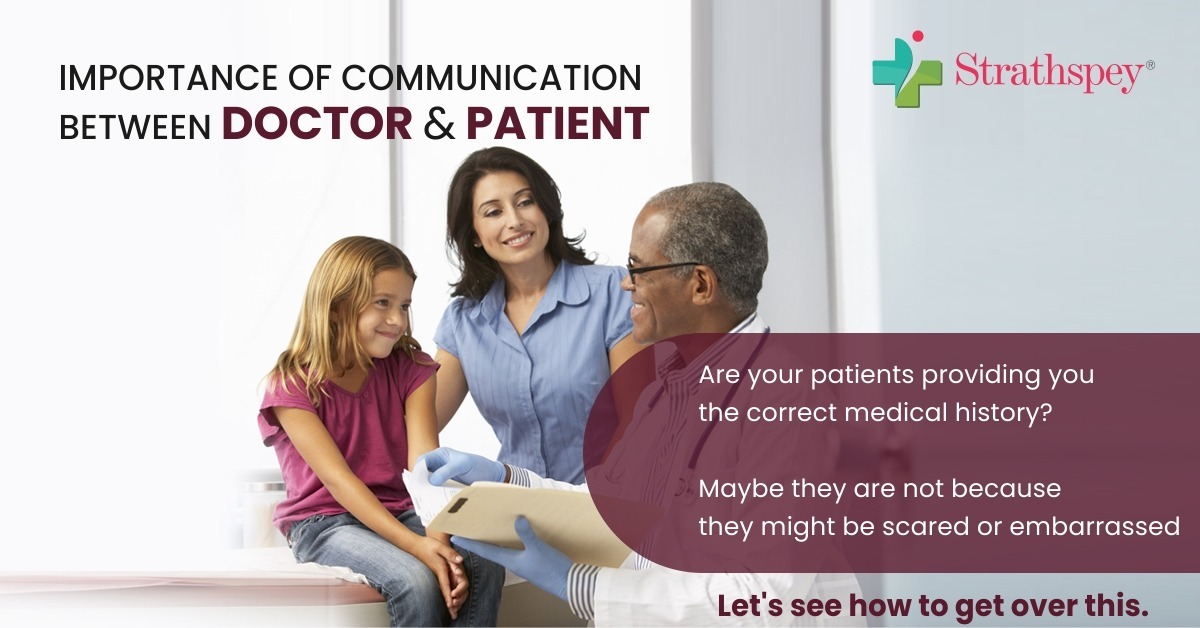Fight Against Anti-microbial Resistance during Pandemic
 16/07/2021
16/07/2021 Strathspey
Strathspey 0
0
.jpg?alt=media&token=82fc7990-d069-42ba-b73f-9c501a7bb67b)
World Antimicrobial
Awareness Week or WAAW is observed every year between November 18
and 24. The theme for WAAW 2021 is ‘’Spread Awareness, Stop
Resistance’’. The awareness movement, in accordance with this year’s
theme calls for health stakeholders, healthcare providers,
policymakers and most importantly the general public to be
Antimicrobial Resistance (AMR) Awareness champions.
What is Antimicrobial resistance?
Antimicrobial resistance (AMR) is the ability of microorganisms to persist or grow in the presence of drugs designed to inhibit or kill them. These drugs, called antimicrobials, are used to treat infectious diseases caused by microorganisms such as bacteria, fungi, viruses and protozoan parasites.
When microorganisms become resistant to antimicrobials, standard treatments are often ineffective, and in some cases, no drugs provide effective therapy. Consequently, treatments fail. This increases illness and mortality in humans, animals and plants. For agriculture, this causes production losses, damages livelihoods and jeopardizes food security. Moreover, AMR can spread among different hosts and the environment, and antimicrobial-resistant microorganisms can contaminate the food chain.
Antimicrobial resistance: A global concern
While bacterial resistance is a natural occurrence, antibiotic misuse is accelerating the problem. A World Health Organization (WHO) report published in April 2021 revealed that none of the 43 antibiotics currently being developed “sufficiently address the problem of drug resistance” in the world’s most dangerous bacteria. If global antimicrobial resistance (AMR) goes unchecked, we face a future where even minor infections could mean death.
AMR is one of the top ten global public health threats facing humanity. The emergence and spread of antimicrobial-resistant organisms have a direct consequence on the ability to treat common infections. We are all aware of the global spread of superbugs that are multi and pan-resistant bacteria. These cause infections that cannot be treated by existing antibiotics.
It is, therefore, extremely important to change the way antibiotics are being used. If our behaviour towards antibiotics does not change, then new antibiotics will also eventually become ineffective.
Antibiotic resistance leads to increased medical costs, longer hospital stays and an increased rate of death. The cost of AMR therefore to health systems and national economies is profound.
Antimicrobial resistance can lead to:
-More serious infections,
-Longer recovery times,
-Increased medical expenses,
-The use of more expensive drugs or riskier procedures,
-Possible death.
What are microbes?
Microbes are tiny organisms that can enter your body. Examples of microbes include:
-Bacteria.
-Viruses.
-Fungi.
-Parasites.
Microbes have lived on earth for 3.5 billion years in every type of environment, making them the most numerous and adaptable form of life on the planet.
What are examples of antimicrobials?
What is Antimicrobial resistance?
Antimicrobial resistance (AMR) is the ability of microorganisms to persist or grow in the presence of drugs designed to inhibit or kill them. These drugs, called antimicrobials, are used to treat infectious diseases caused by microorganisms such as bacteria, fungi, viruses and protozoan parasites.
When microorganisms become resistant to antimicrobials, standard treatments are often ineffective, and in some cases, no drugs provide effective therapy. Consequently, treatments fail. This increases illness and mortality in humans, animals and plants. For agriculture, this causes production losses, damages livelihoods and jeopardizes food security. Moreover, AMR can spread among different hosts and the environment, and antimicrobial-resistant microorganisms can contaminate the food chain.
Antimicrobial resistance: A global concern
While bacterial resistance is a natural occurrence, antibiotic misuse is accelerating the problem. A World Health Organization (WHO) report published in April 2021 revealed that none of the 43 antibiotics currently being developed “sufficiently address the problem of drug resistance” in the world’s most dangerous bacteria. If global antimicrobial resistance (AMR) goes unchecked, we face a future where even minor infections could mean death.
AMR is one of the top ten global public health threats facing humanity. The emergence and spread of antimicrobial-resistant organisms have a direct consequence on the ability to treat common infections. We are all aware of the global spread of superbugs that are multi and pan-resistant bacteria. These cause infections that cannot be treated by existing antibiotics.
It is, therefore, extremely important to change the way antibiotics are being used. If our behaviour towards antibiotics does not change, then new antibiotics will also eventually become ineffective.
Antibiotic resistance leads to increased medical costs, longer hospital stays and an increased rate of death. The cost of AMR therefore to health systems and national economies is profound.
Antimicrobial resistance can lead to:
-More serious infections,
-Longer recovery times,
-Increased medical expenses,
-The use of more expensive drugs or riskier procedures,
-Possible death.
What are microbes?
Microbes are tiny organisms that can enter your body. Examples of microbes include:
-Bacteria.
-Viruses.
-Fungi.
-Parasites.
Microbes have lived on earth for 3.5 billion years in every type of environment, making them the most numerous and adaptable form of life on the planet.
What are examples of antimicrobials?
Scientists have invented many antimicrobials – medications that
treat illnesses caused by microbes. A very short list
includes:
-Penicillin (an antibiotic).
-Valacyclovir (an antiviral agent).
-Fluconazole (an antifungal medication).
-Praziquantel (an antiparasite medication).
What illnesses do microbes cause?
-Penicillin (an antibiotic).
-Valacyclovir (an antiviral agent).
-Fluconazole (an antifungal medication).
-Praziquantel (an antiparasite medication).
What illnesses do microbes cause?
Microbes cause a variety of illnesses that antimicrobials treat.
Some examples include:
-Strep throat.
-Pneumonia.
-Food poisoning.
-Colds.
-Influenza (the flu).
-Athlete’s foot.
-Yeast infections.
-Tapeworms.
-Gonorrhea.
-Urinary tract infections.
Steps can be taken at all levels of society to reduce the impact and limit the spread of resistance. The World Health Organization has laid down certain points on the individual, policymaker and health professional levels to prevent and control the spread of antibiotic resistance.
Individuals
To prevent and control the spread, individuals can:
-Only use antibiotics when prescribed by a certified health professional.
-Never demand antibiotics if your health worker says you don’t need them.
-Always follow your health worker’s advice when using antibiotics.
-Never share or use leftover antibiotics.
-Prevent infections by regularly washing hands, preparing food hygienically, avoiding close contact with sick people, practising safer sex, and keeping vaccinations up to date.
-Prepare food hygienically, following the WHO Five Keys to Safer Food (keep clean, separate raw and cooked, cook thoroughly, keep food at safe temperatures, use safe water and raw materials) and choose foods that have been produced without the use of antibiotics for growth promotion or disease prevention in healthy animals.
Policymakers
To prevent and control the spread of antibiotic resistance, policymakers can:
-Ensure a robust national action plan to tackle antibiotic resistance is in place.
-Improve surveillance of antibiotic-resistant infections.
-Strengthen policies, programmes, and implementation of infection prevention and control measures.
-Regulate and promote the appropriate use and disposal of quality medicines.
-Make information available on the impact of antibiotic resistance.
Health professionals
To prevent and control the spread of antibiotic resistance, health professionals can:
-Prevent infections by ensuring your hands, instruments, and environment are clean.
-Only prescribe and dispense antibiotics when they are needed, according to current guidelines.
-Report antibiotic-resistant infections to surveillance teams.
-Talk to your patients about how to take antibiotics correctly, antibiotic resistance and the dangers of misuse.
-Talk to your patients about preventing infections (for example, vaccination, hand washing, safer sex, and covering nose and mouth when sneezing).
Conclusion:
Global Research and Development priority setting for AMR
In 2017, to guide research and development into new antimicrobials, diagnostics and vaccines, WHO developed the WHO priority pathogens list. It will be updated in 2022. On an annual basis, WHO reviews the pre-clinical and clinical antibacterial pipelines to see how the pipeline is progressing with respect to the WHO priority pathogens list. A critical gap remains in research and development, in particular for antibacterial targeting of the gram-negative carbapenem-resistant bacteria.
-Strep throat.
-Pneumonia.
-Food poisoning.
-Colds.
-Influenza (the flu).
-Athlete’s foot.
-Yeast infections.
-Tapeworms.
-Gonorrhea.
-Urinary tract infections.
Steps can be taken at all levels of society to reduce the impact and limit the spread of resistance. The World Health Organization has laid down certain points on the individual, policymaker and health professional levels to prevent and control the spread of antibiotic resistance.
Individuals
To prevent and control the spread, individuals can:
-Only use antibiotics when prescribed by a certified health professional.
-Never demand antibiotics if your health worker says you don’t need them.
-Always follow your health worker’s advice when using antibiotics.
-Never share or use leftover antibiotics.
-Prevent infections by regularly washing hands, preparing food hygienically, avoiding close contact with sick people, practising safer sex, and keeping vaccinations up to date.
-Prepare food hygienically, following the WHO Five Keys to Safer Food (keep clean, separate raw and cooked, cook thoroughly, keep food at safe temperatures, use safe water and raw materials) and choose foods that have been produced without the use of antibiotics for growth promotion or disease prevention in healthy animals.
Policymakers
To prevent and control the spread of antibiotic resistance, policymakers can:
-Ensure a robust national action plan to tackle antibiotic resistance is in place.
-Improve surveillance of antibiotic-resistant infections.
-Strengthen policies, programmes, and implementation of infection prevention and control measures.
-Regulate and promote the appropriate use and disposal of quality medicines.
-Make information available on the impact of antibiotic resistance.
Health professionals
To prevent and control the spread of antibiotic resistance, health professionals can:
-Prevent infections by ensuring your hands, instruments, and environment are clean.
-Only prescribe and dispense antibiotics when they are needed, according to current guidelines.
-Report antibiotic-resistant infections to surveillance teams.
-Talk to your patients about how to take antibiotics correctly, antibiotic resistance and the dangers of misuse.
-Talk to your patients about preventing infections (for example, vaccination, hand washing, safer sex, and covering nose and mouth when sneezing).
Conclusion:
Global Research and Development priority setting for AMR
In 2017, to guide research and development into new antimicrobials, diagnostics and vaccines, WHO developed the WHO priority pathogens list. It will be updated in 2022. On an annual basis, WHO reviews the pre-clinical and clinical antibacterial pipelines to see how the pipeline is progressing with respect to the WHO priority pathogens list. A critical gap remains in research and development, in particular for antibacterial targeting of the gram-negative carbapenem-resistant bacteria.
.jpeg?alt=media&token=e7ba6f8e-17a4-477e-a589-e00341d2160c)

.jpg?alt=media&token=c0ed94bc-7e5c-44d5-9a50-ed2df3599559)


